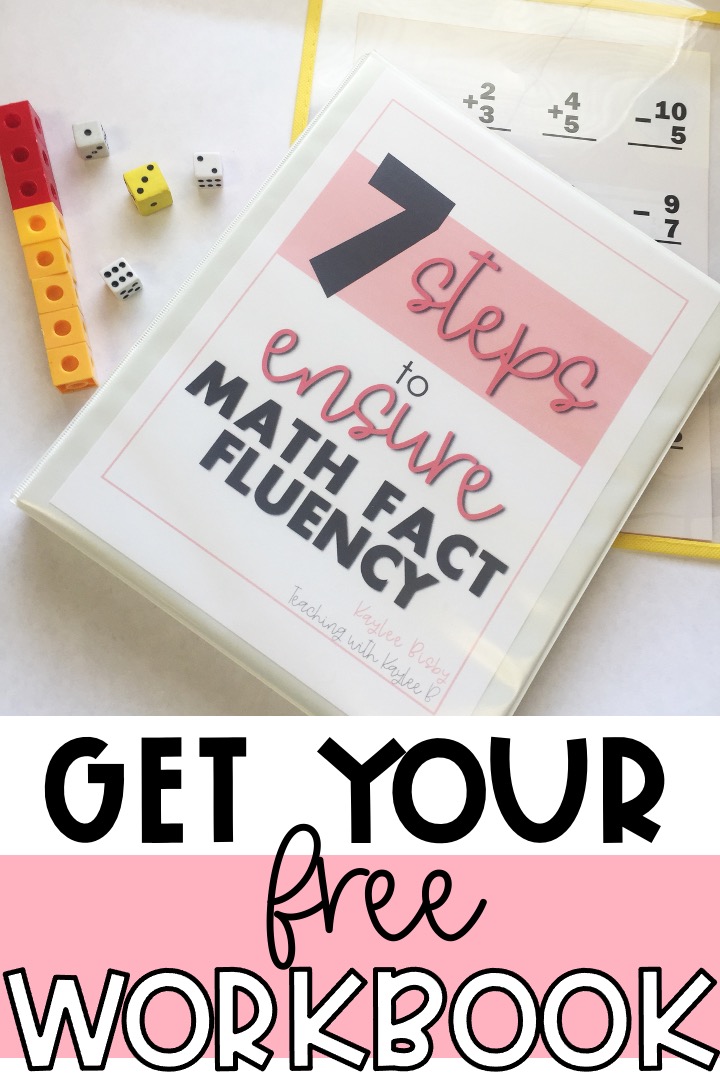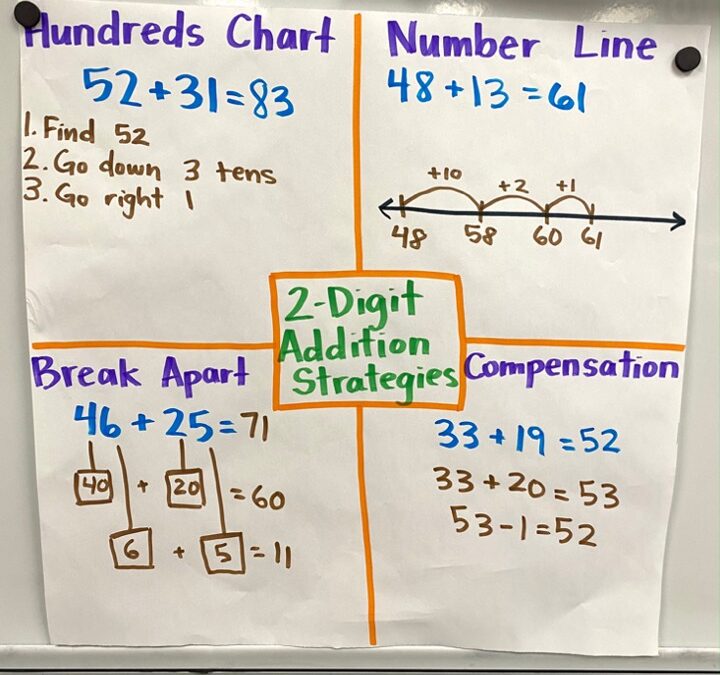Most teachers have a love-hate relationship when it comes to 2nd grade addition strategies. We know that it’s important for students to learn because they increase number sense and understanding. But it can be hard for students to understand and master all of them. So today I’m sharing the 2nd grade addition strategies I teach plus tips on how to teach them.
Wanting more help to get students to math fact fluency? Check out my free workbook for 1st and 2nd grade students: 7 Steps to Ensure Math Fact Fluency. Download your free copy here.
2nd Grade Addition Strategies
Math fact addition strategies for 2nd grade help students find the answer to math facts even if they don’t have the answer memorized yet. They help take out the stress and anxiety that math facts can bring to students. That is why I focus on teaching 2nd grade addition strategies.
Counting On
I start off teaching this addition strategy by showing students an addition equation. We start with the bigger number and I make them with counting blocks. Then we start on the number and start counting on by one. I show my students lots of examples. We even try starting with the smaller number and students can see how that takes longer.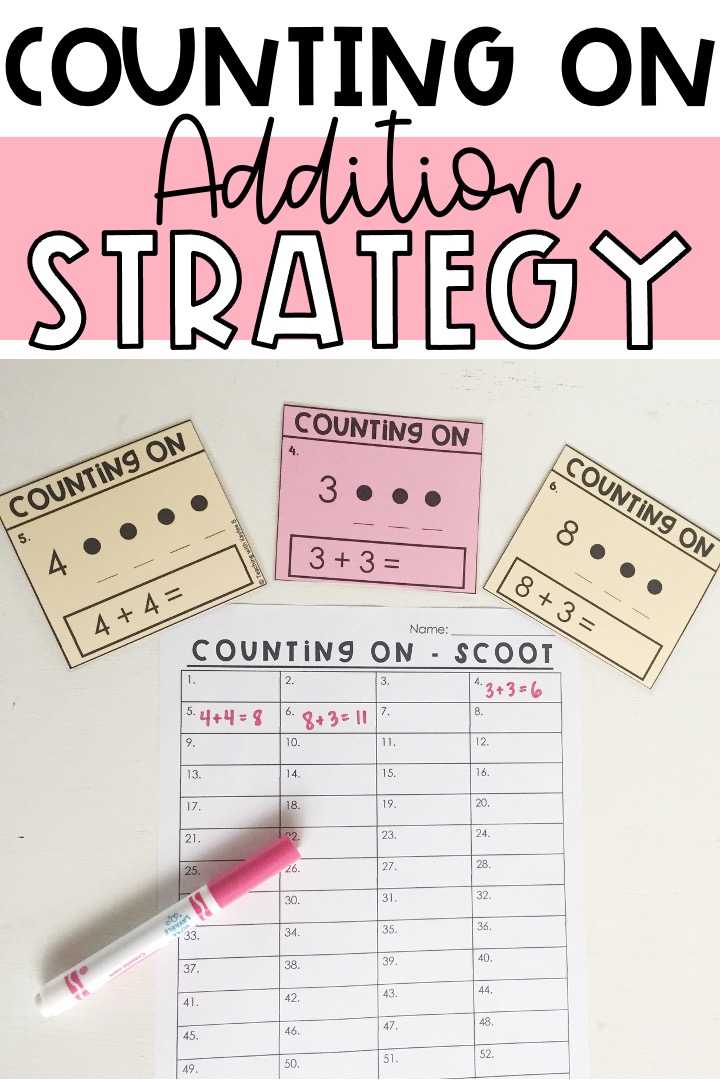
Then I get my students lots of practice. I use a counting on scoot activity to do this. I partner up students and they go around the room solving math facts with the counting on strategy. Students get the support they need as they work with a partner.
Then for individual practice I have students complete counting on worksheets. Then at the end of the day, I will give my students a counting on exit ticket. This helps me quickly assess where students are at this strategy. Find these task cards, worksheets, and exit tickets here.
Number Line
Along with counting on, I like to teach my students how to find the answer to addition equations with this 2nd grade addition strategy. I model to students solving addition equations with a number line. I show them the “quick way” of starting at the bigger number.
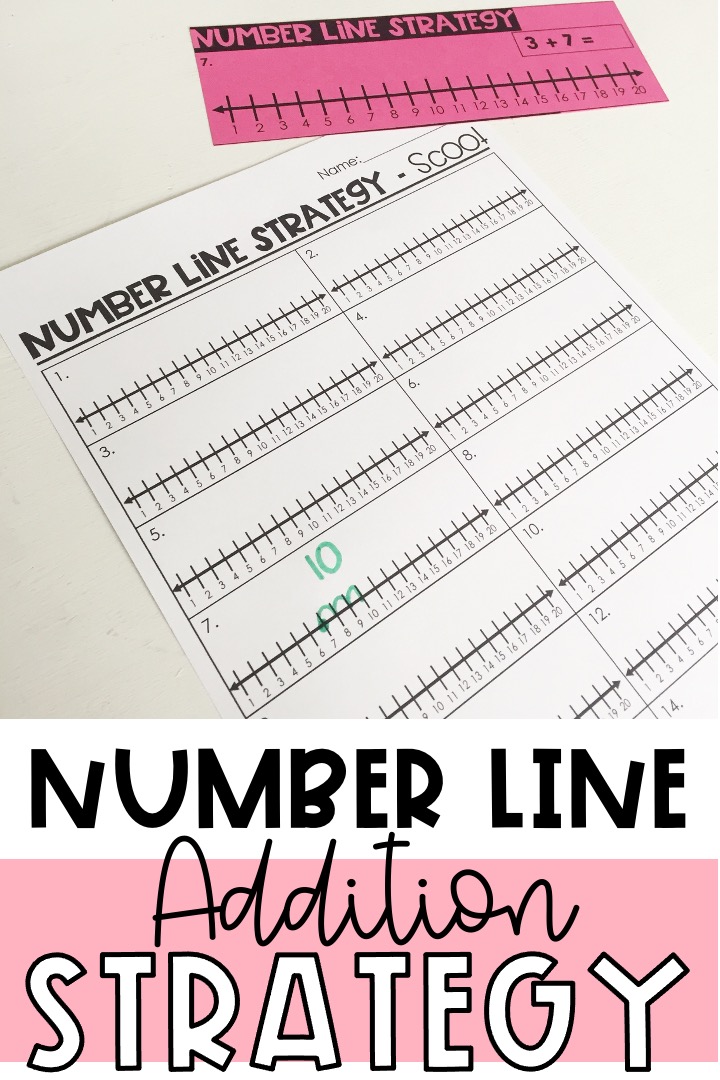
Then just like counting on, I have students complete a scoot activity with a partner. I give them independent practice with worksheets and then assess them with an exit ticket. Find all of these resources here.
Make 10
Once students have mastered both the counting on addition strategy and the number line addition strategy, I know they are ready to learn addition reasoning strategies. That is where the Make 10 addition strategy comes into play.
I show two ten frames up on my board. Then I show an addition equation. We start filling up one of the ten frames with the bigger number. Then I ask how we can break apart the other number to make ten. Then we fill in the rest of the number to get the answer.
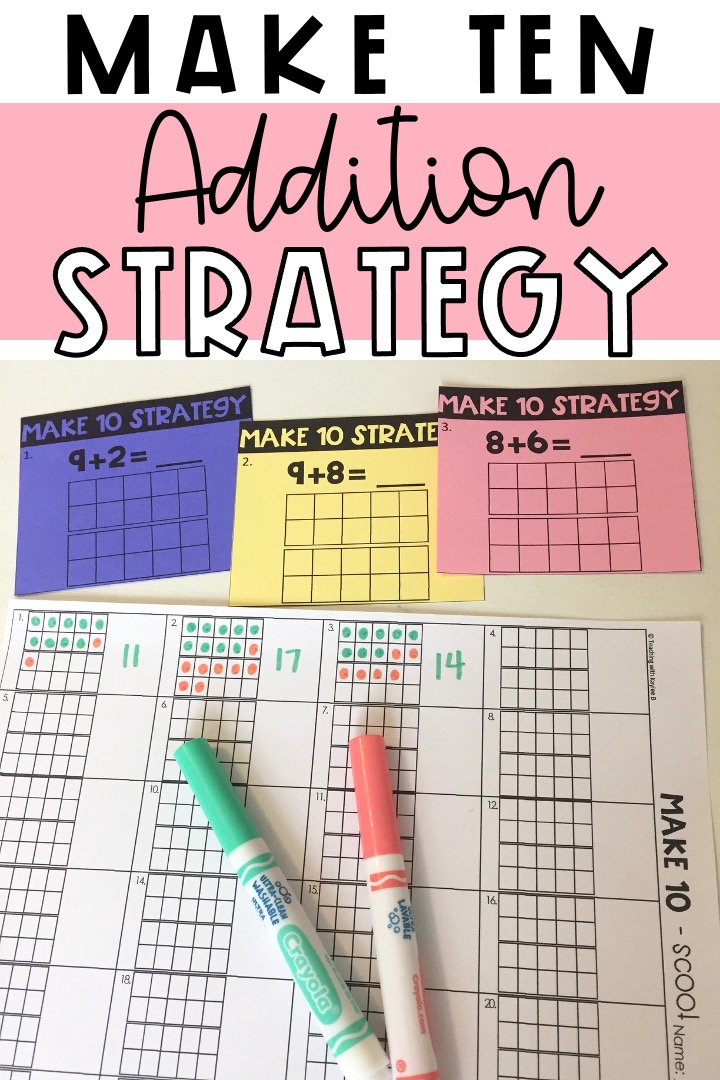
I then get my students practice with a scoot activity, independent practice with worksheets, and assess where students are at with this addition strategy with an exit ticket. Find these resources here.
Learn more about teaching the make ten addition strategy in this blog post here: How to Teach the Make Ten Strategy
Common Core Math Addition Strategies
We have talked about math fact 2nd grade addition strategies, but the common core has 2nd grade students learn strategies for 2-digit addition strategies as well. So I thought I would share the common core math addition strategies 2nd grade teachers need to teach in their classrooms.
Hundreds Chart
It’s important for students to learn the patterns of the hundreds chart. Students get lots of practice with hundreds charts in 1st grade. So they should know that with adding ones, you go right. And with adding tens you go down.
I model to students to start at the first number of the addition equation. Then to look to at the tens number in the second number and go down that many on the hundreds chart. Then look at the ones number and go that many to the right. I model and ask students to help me with multiple example problems.
Then I get students guided practice with a scoot activity and independent practice with worksheets. These activities are great as center activities as well. Find them here.
Read more about teaching the hundreds chart strategy with this blog post: 7 Hundreds Chart Printable Blank Activities to Help Students Build Number Sense
Open Number Line
It’s important for students to see the patterns that when we add a ten to a number, the tens number goes up by one. And to see that when we add a one to the number, the ones number goes up by one.
Students can then use these patterns for this common core math addition strategy. I model solving problems to students. I draw an open number line, start with the biggest number and then make jumps of tens and ones.
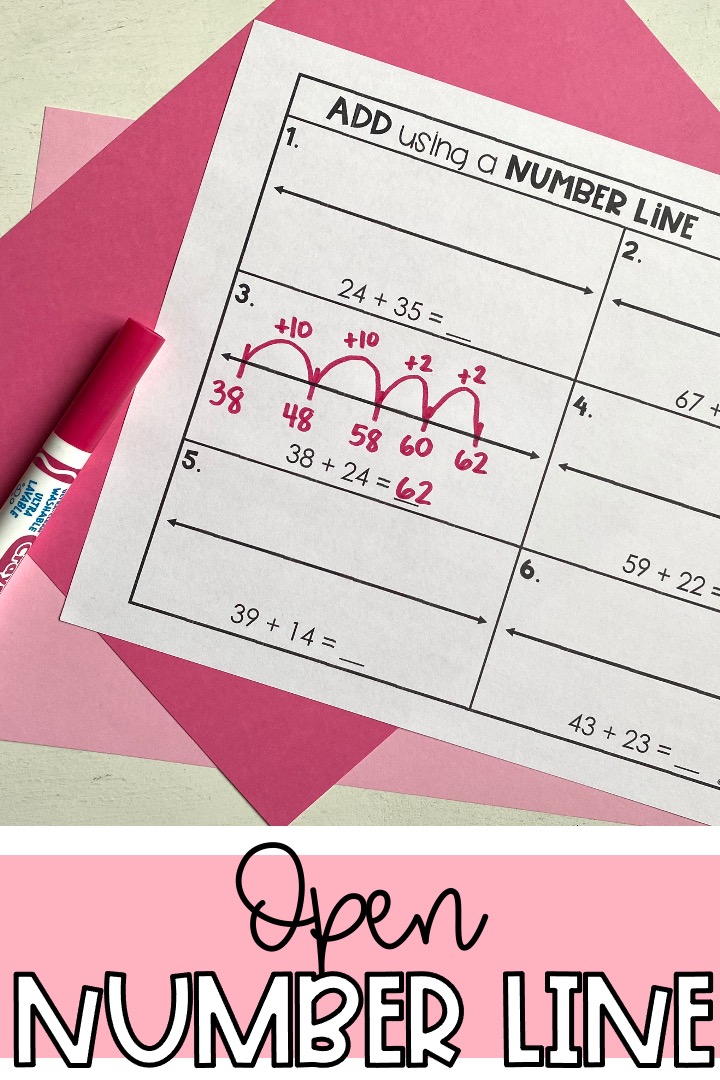
We practice with more problems as students tell me what to do as I model solving. Then I get students guided practice with a scoot game and independent practice with worksheets. Find the resources I use here.
Learn more about teaching the open number line addition strategy here in this blog post: How toTeach Number Line in Addition in a Way That Absolutely Works
Break Apart
With this 2nd grade addition strategy, students break apart the second number in the equation and then add the tens and ones.
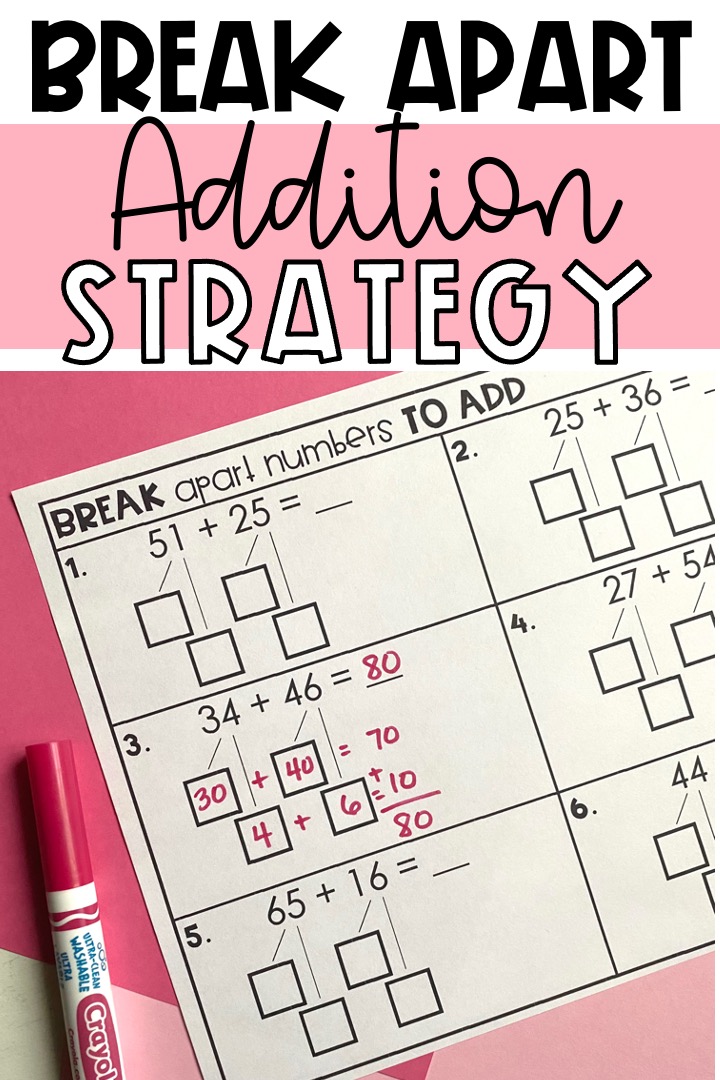
I model this for students by drawing a tens box and a ones box for the second number. We break apart the number and then add. I model with lots of examples and then get students practice with a scoot activity and a worksheet for independent practice. Find these resources here.
For more tips for teaching 2-digit addition strategies, read this blog post here: 2-Digit Addition Strategies That Work
Anchor Chart For Addition Strategies
The day after I teach a new strategy, I like to make an anchor chart with my students. This is a good way to review the strategy. I make a chart with all three 2-digit addition strategies. That way students can reference it whenever they need. It also helps them choose a strategy when they are stuck.
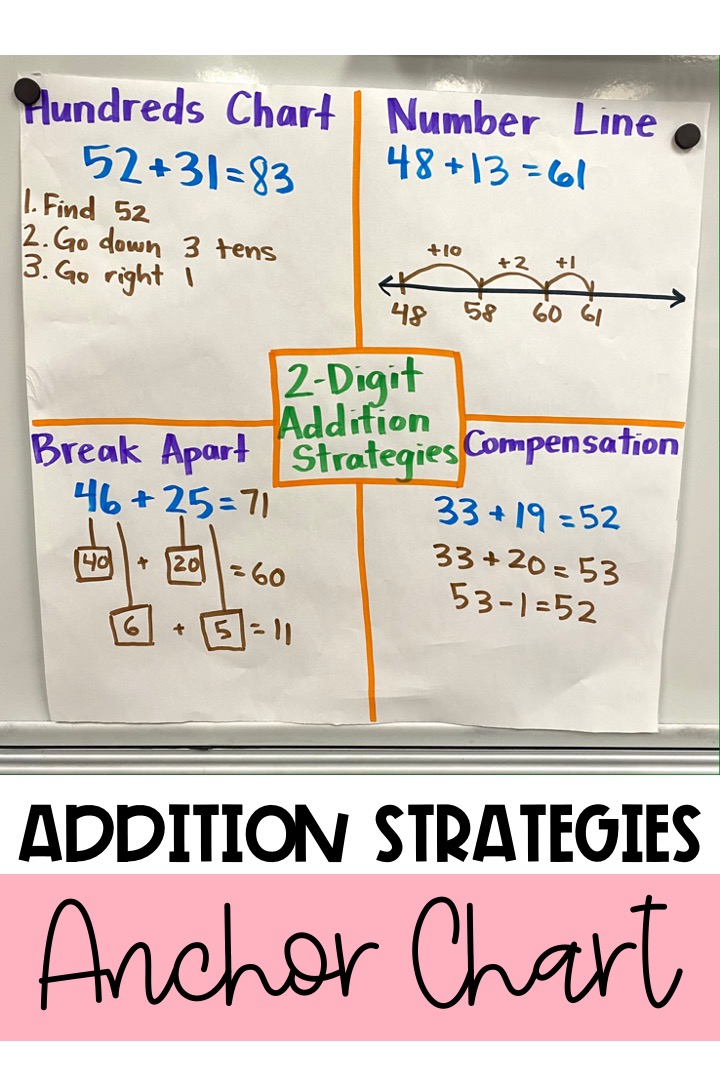
For addition math fact strategies, I have pre-made anchor charts for the strategies. I print them out and laminate them. I hang them up so whenever students are stuck on a math fact, I can direct them to our charts where they can pick a strategy to help them. Find these anchor charts here.
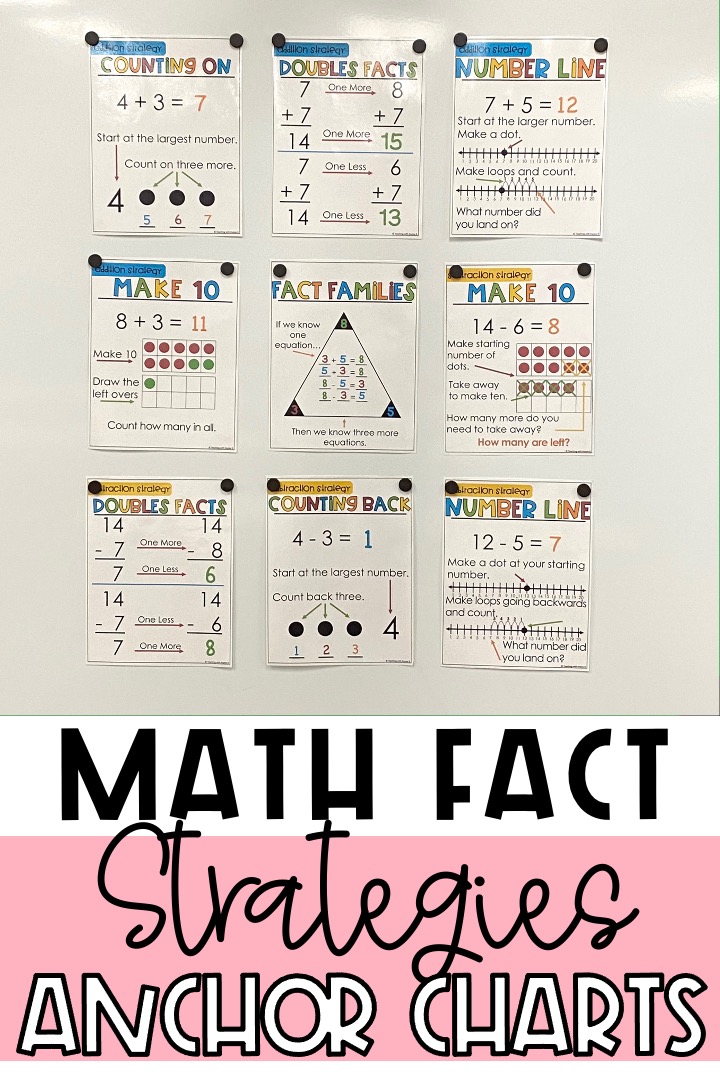
I hope you have been able to get new ideas and tips for teaching 2nd grade addition strategies. As students practice with these strategies, they will grow in their number sense and mathematical abilities.
Did you need more guidance when it comes to getting your students to math fact fluency? Download my free workbook for 1st and 2nd grade teachers: The 7 Steps to Ensure Math Fact Fluency
